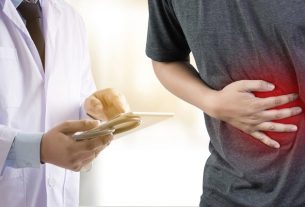The heart is the main organ of the cardiovascular system, it is about the size of a closed hand and shaped like a cone. The weight of the heart varies according to the person’s body weight, age and sex, generally being between 230 g and 340 g in adults.
The heart is located below the sternum, which is the bone in the middle of the chest that supports the clavicle and rib, on the left side of the chest, and the main function of this organ is to pump blood throughout the body.
In the presence of changes in the functions of the heart, some diseases may appear in this organ, such as heart murmur, large heart, arrhythmia or heart attack. Therefore, it is important to see a cardiologist if symptoms appear that could indicate heart problems, such as palpitations, shortness of breath, chest pain and tiredness, for example.

Main functions
The heart is the main organ of the cardiovascular system and performs essential functions for the body, including:
1. Pump blood throughout the body
The heart is responsible for pumping blood, through blood vessels, to all organs, muscles and tissues.
In addition, the heart also receives blood without oxygen and rich in carbon dioxide from the body and transports it to the lungs. In the lungs, the blood releases carbon dioxide and receives oxygen, returning to the heart, which is then pumped throughout the body again.
2. Control your heart rate
Through its own system of electrical stimuli, the heart controls its beats, keeping the heart rate within the recommended range, which is between 50 and 60 beats per minute for adults who practice physical activity and the elderly, for example. Know the appropriate heart rate for each person.
3. Balance blood pressure
During the beat, the heart contracts to pump blood to the body, causing systolic pressure in the arteries, also known as the “highest value” (e.g.: 135 mmHg). In the interval between heart beats, this organ relaxes, reducing the pressure in the arteries, which is known as diastolic pressure, or the “lowest value” (e.g.: 80 mmHg).
Where is the heart
The heart is located above the diaphragm muscle and below the sternum, which is the bone in the middle of the chest that supports the clavicle and ribs, lying between the lungs and slightly on the left side of the chest.
Anatomy
The heart is a hollow muscular organ, shaped like an inverted cone and about the size of a closed hand. The weight of the heart varies according to the age, sex and body weight of each person, being between 280 g and 340 g in men and between 230 and 280 grams in women, for example.
This body is made up of some structures:
- Paredes: are muscles that contract and relax to transport blood to the body, being divided into endocardium, myocardium, epicardium and epicardium;
- Cameras: are divided into 2 atria and 2 ventricles. The right atrium receives blood from the body and transports it to the left ventricle. The left atrium receives blood with oxygen from the lungs and pumps it to the left ventricle. The right ventricle pumps oxygen-depleted blood to the lungs and the left ventricle pumps blood throughout the body;
- Valves: the atrioventricular, tricuspid, aortic and pulmonary valves are responsible for blood circulation between the atria and ventricles;
- Blood vessels: this system is made up of arteries, which transport blood with oxygen throughout the body (except the pulmonary arteries); veins, which carry oxygen-depleted blood from the body to the heart; and capillaries, which are small vessels where the body exchanges blood without oxygen with blood rich in oxygen;
- Electrical conduction system: This system is made up of cells that transmit electrical impulses between the chambers of the heart, being responsible for controlling the rhythm of the heartbeat.
Furthermore, the coronary arteries, which cover the entire heart, are responsible for supplying nutrients to this organ.
Main heart problems
Some problems that can arise in the heart include:
Heart problems can be hereditary, such as Brugada syndrome or congenital heart disease; or they may arise due to unhealthy habits and lifestyles, such as a diet rich in sugar and fat, and a sedentary lifestyle, for example.
Furthermore, another problem that can also arise in this organ is a racing heart, known scientifically as tachycardia, which can happen due to simple situations, such as anxiety or excessive coffee consumption or more serious problems, such as arrhythmia or thyroid disease, for example. .
Online test for heart problems
If you think you may have a heart problem, please select what you are feeling to find out your risk:
It is important to remember that this tool only serves as guidance to try to identify the possible cause of your symptoms. Therefore, it should not replace a consultation with a doctor, who is the professional responsible for confirming the diagnosis and recommending the most appropriate treatment.
When to go to the doctor
It is important to see a general practitioner or cardiologist whenever symptoms related to heart problems arise, such as recurring tiredness, swelling in the ankles, legs or feet, snoring during sleep and cold sweat.
However, in cases of more serious symptoms such as pain on the left side of the chest, numbness or tingling in the left arm, dry cough, nausea, cold sweat and increased heart rate, it is important to seek urgent medical care.

Sign up for our newsletter and stay up to date with exclusive news
that can transform your routine!
Warning: Undefined array key "title" in /home/storelat/public_html/wp-content/plugins/link-whisper-premium/templates/frontend/related-posts.php on line 12
Warning: Undefined array key "title_tag" in /home/storelat/public_html/wp-content/plugins/link-whisper-premium/templates/frontend/related-posts.php on line 13



